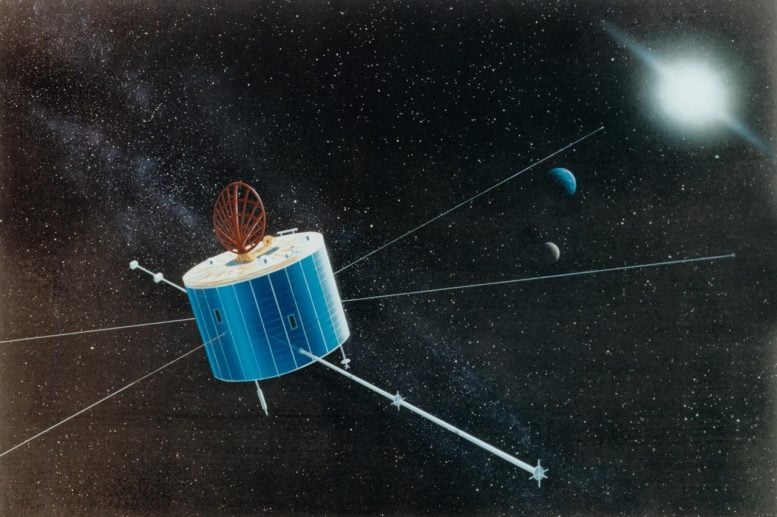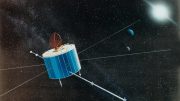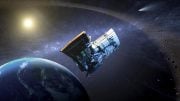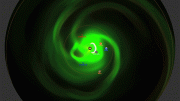
An artist’s concept of the Geotail spacecraft. The Geotail spacecraft was designed and built by ISAS and was launched on July 24, 1992. After fulfilling Its original objective of studying the dynamics of the Earth’s magnetotail over a wide range of distances, extending from the near-Earth region, roughly eight Earth radii (Re) from the Earth to the distant tail about two hundred Re, its orbit was changed. Since February 1995, Geotail has been in an elliptical nine-by-thirty Re orbit where it has provided data on most aspects of the solar wind interaction with the magnetosphere. The spacecraft contains a magnetic field monitor, an electric field monitor, two plasma monitors, two sets of high-energy particle monitors, and a plasma wave instrument. Credit: NASA
The Geotail mission, a joint venture between NASA, ISAS, and JAXA, faces challenges following the failure of its last operational data recorder, suspending the collection and downlinking of scientific data. Launched in 1992, Geotail has provided crucial information about the Earth’s magnetosphere and made unexpected lunar discoveries, despite the setbacks.
NASA’s Science Mission Directorate, Japan’s Institute of Space and Astronautical Science (ISAS), and the Japan Aerospace Exploration Agency (JAXA) are determining how to move forward with the joint Geotail mission after discovering that the spacecraft’s last operational data recorder has failed.
Originally, Geotail was equipped with two data recorders to collect the mission’s scientific data. In 2012, one data recorder failed after the mission had already spent 20 years of gathering information about the plasma environment around Earth. The remaining data recorder continued collecting data for an additional 10 years until it experienced an anomaly on June 28, 2022.
The team at JAXA discovered the error with the recorder. They have been performing tests to investigate the cause and extent of the damage. Ongoing attempts to recover the recorder have been unsuccessful thus far. Without a functioning recorder, the science data from the U.S. instruments can no longer be collected or downlinked. NASA, ISAS, and JAXA are currently deciding the best path forward for the mission given the failure.
Geotail launched on July 24, 1992, from Cape Canaveral Air Force Station in Florida, with the primary goal of studying the structure and dynamics of the tail region of the Earth’s magnetosphere using a comprehensive set of scientific instruments. The magnetosphere is the area of space surrounding Earth that is controlled by Earth’s magnetic field.
With an elongated orbit, Geotail has spent the last 30 years sailing through the invisible boundaries of the magnetosphere, gathering data on the physical process at play there. Many scientific breakthroughs have been made by Geotail, including helping scientists better understand what causes material from the Sun to pass into the magnetosphere. It has also made discoveries outside its intended scope, such as identifying oxygen, silicon, sodium, and aluminum in the lunar atmosphere.








Be the first to comment on "NASA’s Geotail Spacecraft Experiences an Anomaly – Data Recorder Has Failed"